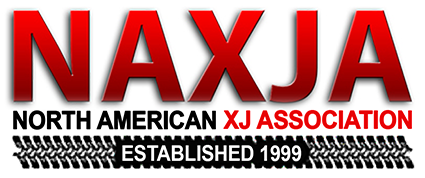5-90
NAXJA Forum User
- Location
- Hammerspace
Here it is - http://www.flatlanderracing.com/strokeramc-258.html
Only problem so far is that they're insisting it's only going to work with the 258. By now, I'm sure you all (as well as I) know that's rubbish - but I'm still working on them.
Right now, I've got a request in for "how'd you make it work with the 258, and how do you make the thing?" so I can get the information and tell them how we can make it work with the 258.
However, I think they'll need some encouragement. I know the kit for teh 258 is about $1600 (yikes!) but it's a bigger performance mod than the cylinder head that came out recently, and I think the two would work well with each other if someone really had some money to spend. However, I'd like to be able to convince them that there might be value in extending the application of this crankshaft to include the 242 (which shouldn't be a large problem, once the parts specs are worked out,) and that it would be worthwhile for them to look into this (especially if they've got someone willing to do all the work but the fine-tuning.)
The fellow I've been talking to there is "Phil" (only moniker given) and he may be reached at [email protected] or 603-378-0090. Here's their shop addy:
Flatlander Racing
24 Elm Street
Plaistow, NH 03865
If we can get these people to see that there's another interested segment out there, perhaps we can get them involved. Since Jake's Racing Engines folded, this is going to be the next best bet for a 'long-stroke' 242 crankshaft - all the better since Jake's topped out at 4.06" anyhow (this thing's good for 4.145 - and I'd like to find out how they did it, to see if it can be pushed any farther. I'd like to know if "cast stroker crank" means an offset ground OEMR casting, or if it means they're casting their own cores, and this could be pushed farther...)
Anyhow, let them know you might be interested, and I think it will help me help them with the engineering. I'd like to see some 'long-stroke' stroker cranks out there, and this might work well for what I'm trying to do with Project: REDSHIFT.
5-90
Only problem so far is that they're insisting it's only going to work with the 258. By now, I'm sure you all (as well as I) know that's rubbish - but I'm still working on them.
Right now, I've got a request in for "how'd you make it work with the 258, and how do you make the thing?" so I can get the information and tell them how we can make it work with the 258.
However, I think they'll need some encouragement. I know the kit for teh 258 is about $1600 (yikes!) but it's a bigger performance mod than the cylinder head that came out recently, and I think the two would work well with each other if someone really had some money to spend. However, I'd like to be able to convince them that there might be value in extending the application of this crankshaft to include the 242 (which shouldn't be a large problem, once the parts specs are worked out,) and that it would be worthwhile for them to look into this (especially if they've got someone willing to do all the work but the fine-tuning.)
The fellow I've been talking to there is "Phil" (only moniker given) and he may be reached at [email protected] or 603-378-0090. Here's their shop addy:
Flatlander Racing
24 Elm Street
Plaistow, NH 03865
If we can get these people to see that there's another interested segment out there, perhaps we can get them involved. Since Jake's Racing Engines folded, this is going to be the next best bet for a 'long-stroke' 242 crankshaft - all the better since Jake's topped out at 4.06" anyhow (this thing's good for 4.145 - and I'd like to find out how they did it, to see if it can be pushed any farther. I'd like to know if "cast stroker crank" means an offset ground OEMR casting, or if it means they're casting their own cores, and this could be pushed farther...)
Anyhow, let them know you might be interested, and I think it will help me help them with the engineering. I'd like to see some 'long-stroke' stroker cranks out there, and this might work well for what I'm trying to do with Project: REDSHIFT.
5-90
